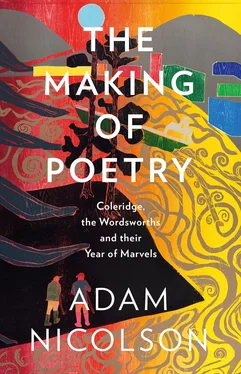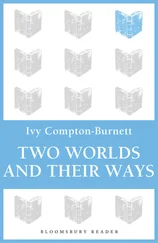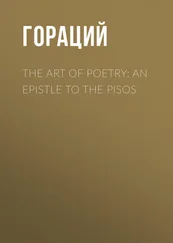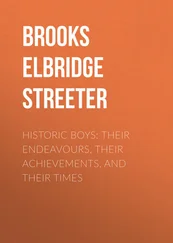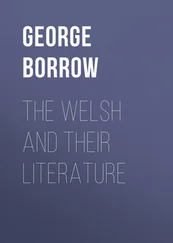Over the smooth, curved carriage drive leading back to the village, buzzards turn in the wind off the sea. A dog barks in Holford Glen, and in response the buzzards catcall over the dying ashwoods. Looking down from the footbridge, the rocks and all the ferns beside them are invisible under the roof of summer leaves. As Alfoxden drops into its felt-lined dark, I stay up and walk along the easy way through the edge of the park. Miles off to the north, the surge of a westerly swell breaks and draws on the stones at East Quantoxhead.
There is the slightest undulation in the surface of the carriageway, an easy coming and going beneath the trunks of the ancient chestnuts. There is no need for light here. This was the way loved by Wordsworth for its continuousness, a zero space whose fluency of form allowed the steady, uninterrupted and murmured composition of his verses as he walked, a place in which his music could hold sway, the body-rhythm of a man who, in one half of his own self-conception, belonged in the park of a fine house, suited to a naturally Miltonic and magisterial frame of mind. Wordsworth had a powerful sense of his own promise, and, in 1797, of his failure to fulfil it. Alfoxden now is a picture of Wordsworth then. What could be more fitted to this great man in trouble than a house in ruins and a park in greater ruins, along whose lightless paths he must make his way to find the greatness he knows is in him?
5
July and August 1797
Coleridge would not have taken long to urge his friends on their first walk out and up into the hills. This was to be the frame of their time here, an emblematic topography which came to play a central part in shaping the poetry they wrote in the course of the year. The whole pattern of life and work swings around the alternations of out and in, up and back, engaged and removed, obscure and revealed that the Quantocks provide.
That drama and setting was a function of geology. The Quantocks are at least twice as old as the comfortable and rather soft Jurassic and Cretaceous rocks around Racedown in north Dorset. The ridge of the Quantocks, or the Quantock as it is called in Somerset, not plural but a single long hard object, stands out above the wet moors of the Levels to the east of them. That single line is a block on the horizon to the west as you approach from the lowlands, a black bulk in the light of the evening, its ridge-line rising and falling, with the trees of its woods standing out against the last of the light. Most of it is no more than 1,200 feet high, and the whole ridge is only about twelve miles long and four or five miles wide, but it looks and feels more than that, a distinct world, an upland province away from the willow and dairy country below it.
These hills are made almost entirely of Devonian rocks, more than 350 million years old, often dark red or in places copper blue from the mineral dust of the ancient deserts, which have been twisted and uplifted in more than one mountain-building episode since. The result is a hardness and strength that mean they now stand proud of the cowy vales that surround them. This hill is built out of dense, dark and intractable slates and grits, with metals and minerals embedded in them, precisely the rocks the Wordsworths would have known as children in Westmorland.
Far more than Dorset, the Quantocks create the kind of highly figured topography to which the aesthetic needs of these people at this moment could respond. The geological structure of England is such that, almost without exception, the further south and east you go, the newer the rocks and the softer the landscapes. In many of the places Wordsworth had been living, in Cambridge and around London, you will find low-lying meadows and rivers brown with silt. Hardness and antiquity, higher hills and hard running water, high outcrops and the stony beds of streams, are all to be found only to the west and north. This was the shift Coleridge had urged on the Wordsworths late in June 1797, and from then, the year acquired its formative geological structure: friends coming to stay nearly always came from the soft east; whenever any of them wanted or needed to engage with the world of business or work, politics or the theatre, they would also travel east, to Bristol or on to London. But whenever they needed stimulus or adventure, beyond what the Quantocks themselves could provide, they walked west, to hardness, over the high tops and on into the wild woods and rocky valleys of Exmoor and Devon. Again and again in the poetry of this year, the implications of this hard but riven landform make themselves apparent: a clear and distinct difference between empty hill and occupied valley, high tops and buried combes, with the brilliant streams acting as the veins and arteries of the whole body of country.
The lane at the southern end of Stowey, just along from Tom Poole’s house, soon leaves behind the clustered domesticity of the village. The road itself in summer is dry and stony, rimmed with the grey-pink dust of the Quantocks, while a stream, which even in July does not fail, runs down the ditches, the first of the bubbling watercourses that give the Quantocks, for all their southern Englishness, a sense of mountain life. They were what Dorothy loved when she first came here: the ever-present sound of water over stones. And so here, physically and immediately, is the first pair of qualities which make this a stimulating place: orderliness and vitality, a mutually enriching and fertile meeting of the natural and the cultural, Welsh poppies growing in the gravel next to a cottage door.
Jungle Lane
In the height of summer there is a thickness and a richness here too, no northern austerity. Leaves shadow the world. Bindweed is in the hedges and the brambles are in flower. Lady’s bedstraw and mallows grow in the shady damp places under the hedges. The roses overtop the garden walls, up and over them, dropping in long tendrils into the lane. Wood-pigeons hoot and strum in the garden trees, and the meadowsweet bubbles beside the road.
The boundary between the cultivated lowland and the hill is quite sharp, no suburban blurring. A stream runs along the floor of the lane itself. Hazels and field maples arch it over into a green tunnel ‘so overshadow’d, it might seem one bower’, and the sun pushes in there in narrow rods, so that the watery floor is spattered and mapped in leopardskin light.
This is the first slight lift of the hills away from Nether Stowey, but the sensation is not of climbing on to the hill but into it, following the wet shaded path as if into a vein. Even on a hot summer day the damp hangs and clings in there. Big lolling hart’s-tongue ferns, feathery polypody ferns and others more like giant shuttlecocks, with the luxuriant undergrowth of dog’s mercury around them, make a jungled Amazonian lushness beside the stream. A broad-bladed frondy apron of fern spreads over the water. This is an English rainforest, coomby with buttercups and little cranesbills, water dropwort and fat, snaking ivies on the trunks of the trees, the whole place womblike, interior. Beyond the hedges, the sunlit meadows beside the lane are spangled with daisies as if they belonged to another and more obvious world.
Whichever way you climb, whether through the damp combes made by the streams or on the old charcoal burners’ tracks that net the hills on all sides, you soon come to the next element: the Quantock oakwoods, one of the great, scarcely regarded beauties of England. They coat the flanks and thighs of each hill, coppiced every sixteen years or so in the 1780s and 90s, so that each new oak, as it grew, curled towards the light, competing with its neighbour. The result is a wriggling snakepit of a wood, in which the trees weave and twist upwards, blotched with lichen, the dancing stems springing from mossy and ferny groins, sometimes four or five to each stool. Their canopy, thirty or forty feet above the bilberries or whortleberries, creates a mosque-like room in which the green carpet of the berries glimmers for thousands of acres beneath them, lined out in avenues of sun-spotted green, an arcaded temple and shrine to growth and light.
Читать дальше
